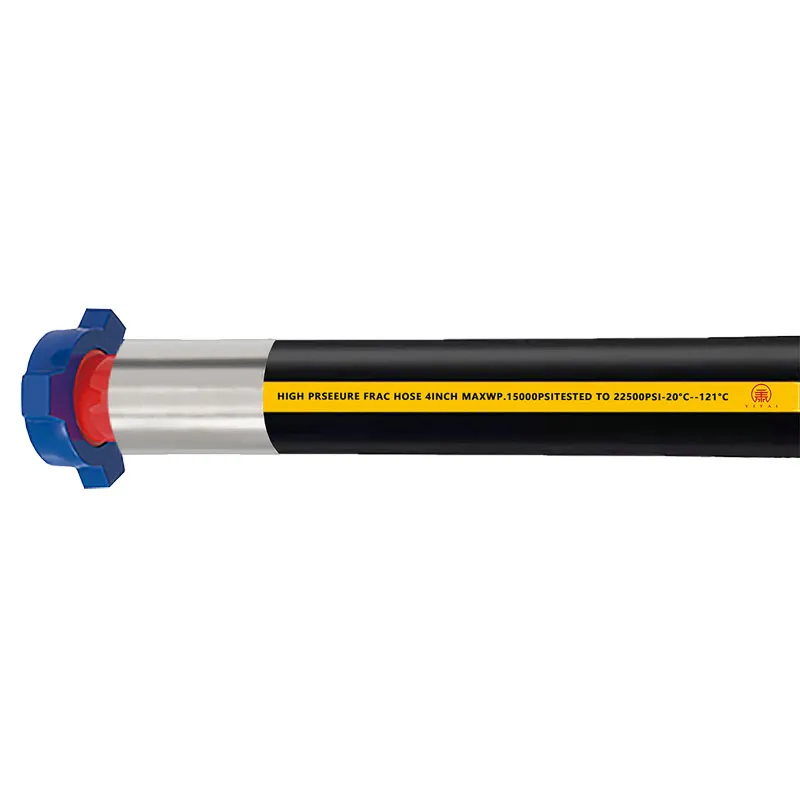Key Factors to Consider When Selecting a Cementing Hose for Your Application
2024-11-15
In industries like oil and gas, where cementing operations are critical for well construction and maintenance, choosing the right equipment is paramount to ensuring safety, efficiency, and durability. One of the most important components in cementing is the cementing hose. These hoses are used to transport cement slurries at high pressure to the wellbore, and they must be designed to withstand extreme conditions.
When selecting a cementing hose, there are several key factors to consider, including temperature tolerance, pressure rating, and flexibility. Understanding these factors will help ensure that the hose performs reliably and safely throughout its service life.
In this blog, we will discuss what you need to know about selecting the right cementing hose based on these critical performance parameters.
1. Temperature Tolerance: Understanding the Role of Heat Resistance in Cementing Hoses
Temperature tolerance is one of the most important factors to consider when selecting a cementing hose. Cementing operations often take place in harsh environments where both high and low temperatures can affect the hose’s integrity.
- High-Temperature Resistance: Cementing operations can generate substantial heat, especially when pumping cement at high pressures or when working in geothermal wells or deep oil and gas reservoirs. Cementing hoses used in these conditions need to be designed to handle extreme temperatures—typically in the range of 250°F to 400°F (121°C to 204°C), depending on the application. Selecting a hose with a high temperature resistance rating ensures that it will not degrade or lose its structural integrity under heat stress.
- Low-Temperature Resistance: Conversely, cementing hoses that are used in colder environments, such as offshore drilling rigs in polar regions, must be able to withstand freezing temperatures. Hoses that do not have adequate low-temperature flexibility may crack or break, compromising safety and efficiency. Cold-weather-rated hoses can maintain flexibility at temperatures as low as -40°F (-40°C), ensuring reliable performance.
Selecting the right cementing hose for your operational temperature range will help ensure the hose does not fail prematurely due to temperature-induced wear.
2. Pressure Rating: Ensuring Hose Durability and Safety
Pressure rating is another crucial factor when selecting a cementing hose. Cementing operations typically involve pumping cement slurries at very high pressures, often ranging from 3,000 psi to 10,000 psi (or even higher, depending on the depth and conditions of the well).
- Matching Hose Pressure Rating: It’s essential to select a hose with a pressure rating that matches or exceeds the maximum pressure likely to be encountered during the cementing process. A hose with a lower pressure rating than required may lead to catastrophic failure, such as hose bursts, which can result in significant downtime and safety hazards.
- Pressure Durability: The pressure rating of a hose is determined by its construction, including the reinforced layers and the materials used. A hose with multiple steel wire braids or a synthetic fiber reinforcement is designed to handle higher pressures, providing both strength and durability.
Before purchasing a cementing hose, you should assess the maximum pressure your operation requires, factoring in any fluctuations or surges in pressure during the cementing process, and choose a hose with an appropriate safety margin.
3. Flexibility: Ensuring Ease of Use and Reliability in Tight Spaces
Flexibility is an often overlooked but important factor when selecting a cementing hose. The design and layout of drilling rigs and equipment can vary greatly, and often hoses need to navigate tight spaces or be maneuvered around other equipment.
- Bend Radius: The flexibility of a cementing hose is largely determined by its bend radius—the minimum curve the hose can make without kinking or damaging the internal structure. If a hose is too rigid, it could crack or fail in situations where it is bent or twisted. Flexible hoses, on the other hand, can be routed more easily and can withstand physical strain during movement, reducing the risk of damage.
- Material Flexibility: The flexibility of the hose is influenced by the materials used in its construction. For example, hoses made with rubber or thermoplastic compounds are more flexible than those made with metal-reinforced layers. A balance between flexibility and durability is necessary to ensure that the hose can endure both physical stress and the harsh chemicals in cement slurry.
For operations in tight spaces or those that require frequent movement, selecting a flexible cementing hose with a low bend radius will improve maneuverability and reduce the risk of hose failure due to bending.
When selecting a cementing hose for your operation, there are several critical factors to consider, including temperature tolerance, pressure rating, and flexibility. Choosing the right hose that can withstand the specific demands of your wellbore and cementing process is essential for ensuring safety, efficiency, and long-lasting performance.
Be sure to consider the environment in which your hoses will be used, the temperature extremes you may encounter, the pressures the hose will need to withstand, and the flexibility required for safe and easy handling. By evaluating these factors carefully, you can choose the right cementing hose to meet the needs of your cementing operation.



